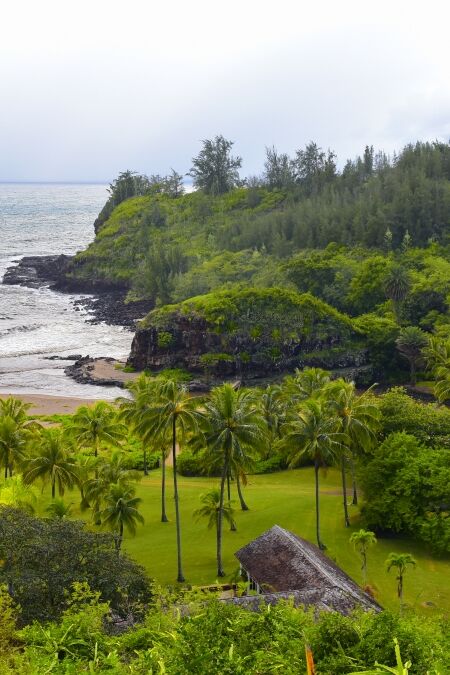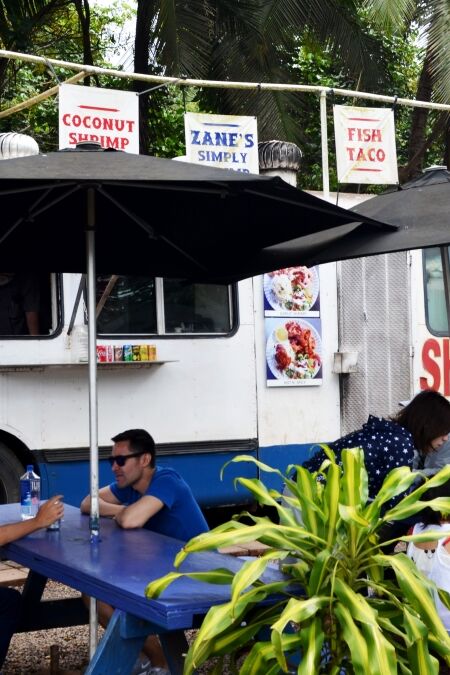Limahuli Garden is a breathtaking botanical garden and nature preserve celebrated for its remarkable biodiversity and deep cultural heritage. This travel guide offers everything you need to plan your visit, discover the garden’s unique attractions, and appreciate its vital role in Hawaiian history and conservation.
Highlights
- Limahuli Garden is a sanctuary for native Hawaiian plants and a unique ecosystem. It offers a rare opportunity to see endangered species found only in Hawaii.
- Walk through ancient terraced gardens and taro patches that were cultivated by early Hawaiians.
- The garden’s location offers breathtaking views of Makana Mountain (locally known as Bali Hai) and the dramatic North Shore coastline.
- Limahuli Garden provides both self-guided and guided tours, allowing flexibility for those who prefer to explore independently or learn directly from knowledgeable guides.
- The garden is managed by the National Tropical Botanical Garden, dedicated to preserving Hawaiian flora and restoring native habitats, appealing to eco-conscious travelers interested in sustainability.
History
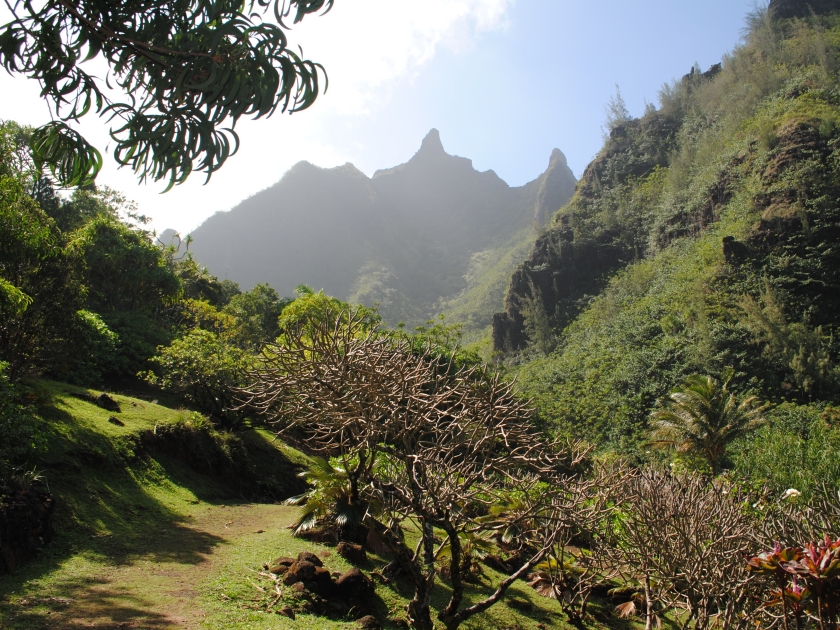
Ancient Heritage and Community
For over 1,500 years, Limahuli Valley has been a central part of Hawaiian history and culture. Originally within the Haʻena ahupuaʻa, an ancient land division, the valley thrived as a vibrant community engaged in traditions like song, poetry, and the sacred fire performance known as oahi. Visitors today can see remnants of ancient architecture and native forests that highlight the resourcefulness of early Hawaiians who cultivated and lived in harmony with the land.
Commitment to Preservation
In the 1960s, Juliet Rice Wichman recognized the ecological and cultural value of Limahuli Valley and began efforts to restore its natural beauty and heritage. By 1967, she had cleared significant areas, reintroduced native plants, and, after years of dedication, entrusted the lower valley (now Limahuli Garden) to the National Tropical Botanical Garden (NTBG). This gift was a lasting contribution to protecting Hawaii’s natural and cultural heritage.
Ecological Sanctuary
Located in one of Hawaii’s most ecologically diverse areas, Limahuli Garden serves as a sanctuary for endangered native plants and animals. It houses over 120 species of Hawaiian flora, many on the brink of extinction in the wild. The garden features ancient taro terraces that demonstrate traditional Hawaiian agriculture and sophisticated water management, a testament to indigenous knowledge of sustainable land stewardship.
New Conservation Efforts
Limahuli Garden has undergone significant updates in recent years, especially following the storm damage of 2019. After careful restoration, the garden reopened with an emphasis on conservation and public education. Through self-guided trails and informational displays, visitors can better understand Hawaii’s unique ecosystems and the importance of preserving them. Limahuli continues to be a crucial site for cultural education and environmental conservation, showcasing Hawaii’s commitment to its natural heritage.
Attractions Within Limahuli Garden
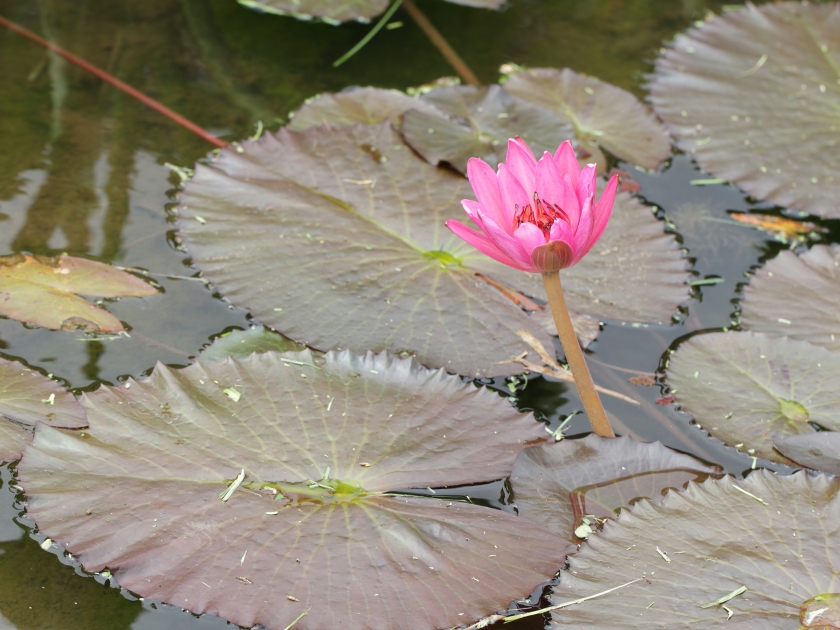
Diverse Plant Life
Limahuli Garden is a sanctuary for over 120 species of native Hawaiian plants, many of which are endangered, such as the rare alula and akia. This botanical oasis plays a vital role in conserving these unique species, allowing visitors to witness firsthand the diversity and ecological importance of Hawaii’s native flora.
Scenic Views
The garden’s trails offer stunning panoramic views of Makana Mountain and the lush Limahuli Valley, immersing visitors in the beauty of Kauaʻi’s rugged landscapes. Well-marked paths lead guests through vibrant greenery and picturesque overlooks, perfect for capturing the essence of Hawaii’s natural splendor.
Cultural Education
Limahuli Garden provides a rich cultural experience, featuring educational placards that describe traditional Hawaiian plant uses and practices. Highlights include ancient taro terraces and medicinal plants, offering insight into how native Hawaiians have utilized these resources for sustenance and healing across generations.
Activities and Experiences
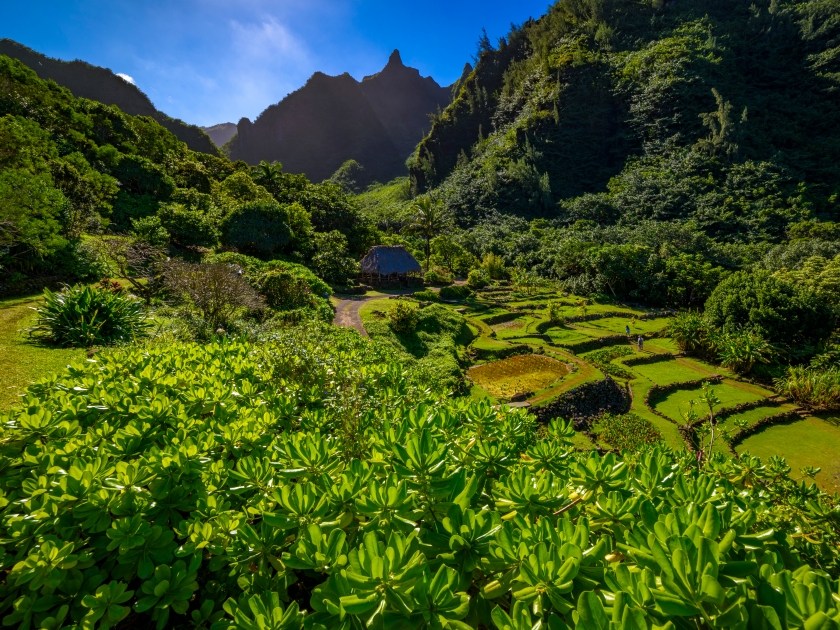
Self-Guided Tours
Limahuli Garden offers a self-guided tour booklet, allowing visitors to explore the garden at their own pace. This handy guide provides valuable insights into the garden’s history, plants, and cultural significance, making it easy for guests to immerse themselves in the experience while following their schedule.
Nature Walks
The serene setting of Limahuli Garden is ideal for peaceful nature walks or family outings. Visitors can stroll through lush landscapes on well-maintained paths, with benches placed throughout the garden for relaxing moments and a chance to soak in the beautiful surroundings.
Visitor Information
Admission to Limahuli Garden is $20 per person, with reservations required to maintain limited capacity and protect the environment. The visitor center offers convenient amenities, including restrooms and educational resources that provide insights into the garden’s history and ecological importance.
Tips for Visiting
- Make a Reservation: Reservations are required due to limited capacity, so book in advance to secure your spot.
- Dress Comfortably: Wear comfortable clothing and sturdy shoes suitable for walking on natural trails.
- Bring Sun Protection: Kauaʻi’s sun can be intense; bring a hat, sunscreen, and sunglasses for protection.
- Stay Hydrated: Carry water, especially if you plan to spend several hours exploring.
- Respect the Environment: Follow all guidelines to help preserve the plants and ecosystems within the garden.
- Photography Tips: Capture the scenic views, but avoid stepping off the trails to protect fragile plants.
- Visit the Visitor Center: Take advantage of educational resources and ask questions to deepen your understanding of the garden’s significance.
Best Time to Visit
The ideal time to visit Limahuli Garden is during the spring and early summer months when the weather is warm and many plants are in bloom, enhancing the garden’s vibrant atmosphere. Early morning visits provide cooler temperatures and softer lighting, perfect for a relaxed stroll and stunning photographs. Occasionally, the garden hosts cultural events that highlight Hawaiian traditions and native plant use, adding an enriching experience for visitors interested in local heritage.
Nearby Attractions
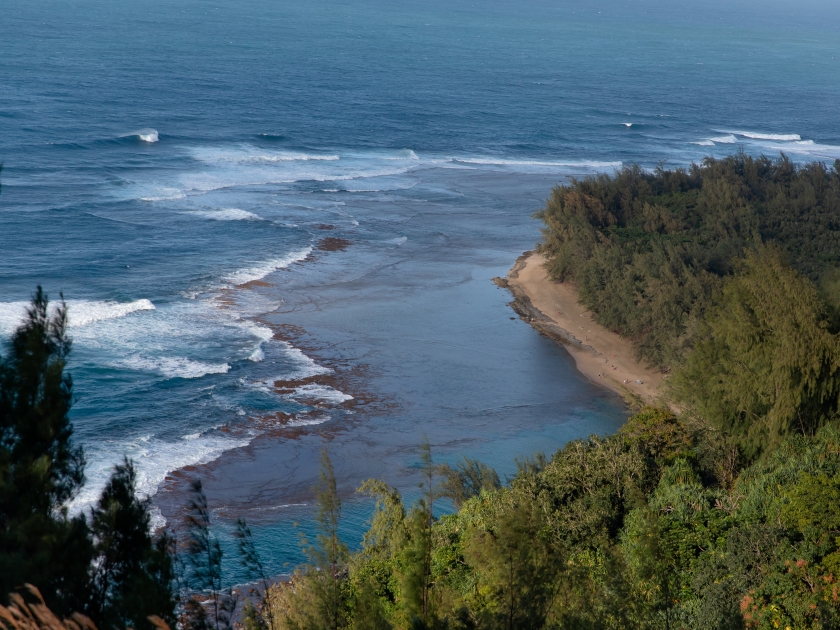
While visiting Limahuli Garden, consider exploring the nearby treasures of Kauaʻi’s North Shore. Haena State Park offers access to scenic coastal trails, including the renowned Kalalau Trail, which provides breathtaking views along the Nā Pali Coast. Just a short distance away, Ke’e Beach invites you to relax on its sandy shores or snorkel in the clear waters. Together, these spots make for a full day of adventure, showcasing the area’s natural beauty and rich cultural landscapes.
Dining and Accommodation Nearby
For a delicious local meal after exploring Limahuli Garden, head to Opakapaka Grill and Bar, known for its fresh seafood and Hawaiian-inspired dishes. You’ll also find an array of food trucks and eateries in nearby Hanalei, offering a variety of local flavors. For accommodation, options range from the relaxing Hanalei Colony Resort with oceanfront views to the rustic charm of YMCA Camp Naue, ideal for those looking for a simpler stay surrounded by nature.
Frequently Asked Questions (FAQs)
Limahuli Garden is known for its lush botanical collection, native Hawaiian plants, and beautiful views of Kauai’s North Shore, showcasing unique biodiversity.
The entrance fee for Limahuli Garden is $20 for adults and $10 for students, with children under 12 admitted for free.
Visitors to Limahuli Garden can see rare native Hawaiian plants, ancient taro terraces, and diverse tropical landscapes that highlight Kauai’s cultural history.
Yes, Limahuli Garden offers an educational and family-friendly experience, with easy walking paths and interactive learning about Hawaiian culture and plants.
Exploring Limahuli Garden takes about 1 to 1.5 hours, allowing visitors to enjoy the guided tour and scenic views at a comfortable pace.
Yes, reservations are recommended as Limahuli Garden limits the number of visitors per day to protect the environment and enhance the visitor experience.
How to Get There
By Car
Limahuli Garden is located on the north shore of Kauai, in the Haena area. To reach the garden by car, start by heading towards the Kuhio Highway (Route 560). Follow the highway past Hanalei town, continuing until you see the signs for Limahuli Garden, which is approximately five miles further. Ensure to check for any road closures or detours, especially during inclement weather, as the north shore is prone to landslides.
By Bus
Those opting for public transportation can use the Kauai Bus, which services the Hanalei area. From Lihue or other parts of Kauai, take the bus towards Hanalei. Once in Hanalei, continue with a local taxi or rideshare service to reach the garden, as the bus doesn’t go directly to Limahuli Garden. Always check the latest bus schedules and routes to plan your trip effectively, as these can change.
Bloom Where Hawaii’s Heart Beats
Limahuli Garden is more than a beautiful escape; it’s a living testament to Hawaii’s heritage and ecological resilience. As you wander its trails, you’ll encounter rare native plants, ancient taro fields, and breathtaking views that weave together nature and culture in a captivating story. A visit here invites you to immerse yourself in Hawaii’s natural beauty and rich traditions, making memories that resonate with the islands’ spirit and enduring legacy.


